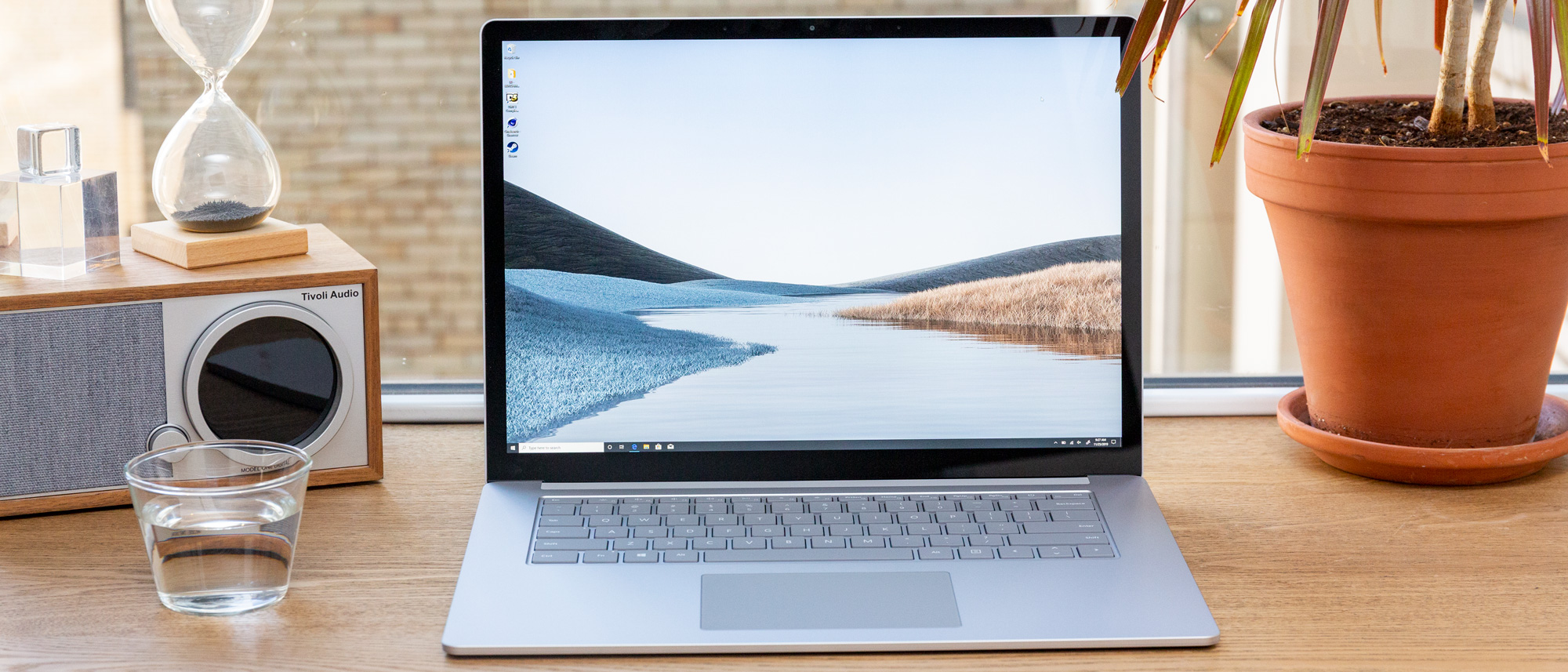Laptop Mag Verdict
Microsoft's Surface Laptop 3 for Business packs faster performance and longer battery life than its AMD-powered sibling.
Pros
- +
Slim, lightweight chassis
- +
Attractive metal design
- +
Fast performance
- +
Comfortable keyboard
- +
Long battery life
Cons
- -
Scant port selection
- -
Integrated graphics still underperform
Why you can trust Laptop Mag
Microsoft's Surface Laptop 3 for Business, powered by 10th Gen Intel processors, fixes almost every criticism we had with the AMD model. Not only does it provide faster performance, but the enterprise model lasts for 1.5 hours longer on a charge. You get all those benefits without giving up the Surface Laptop 3's slim, aluminum design and gorgeous 15-inch display.
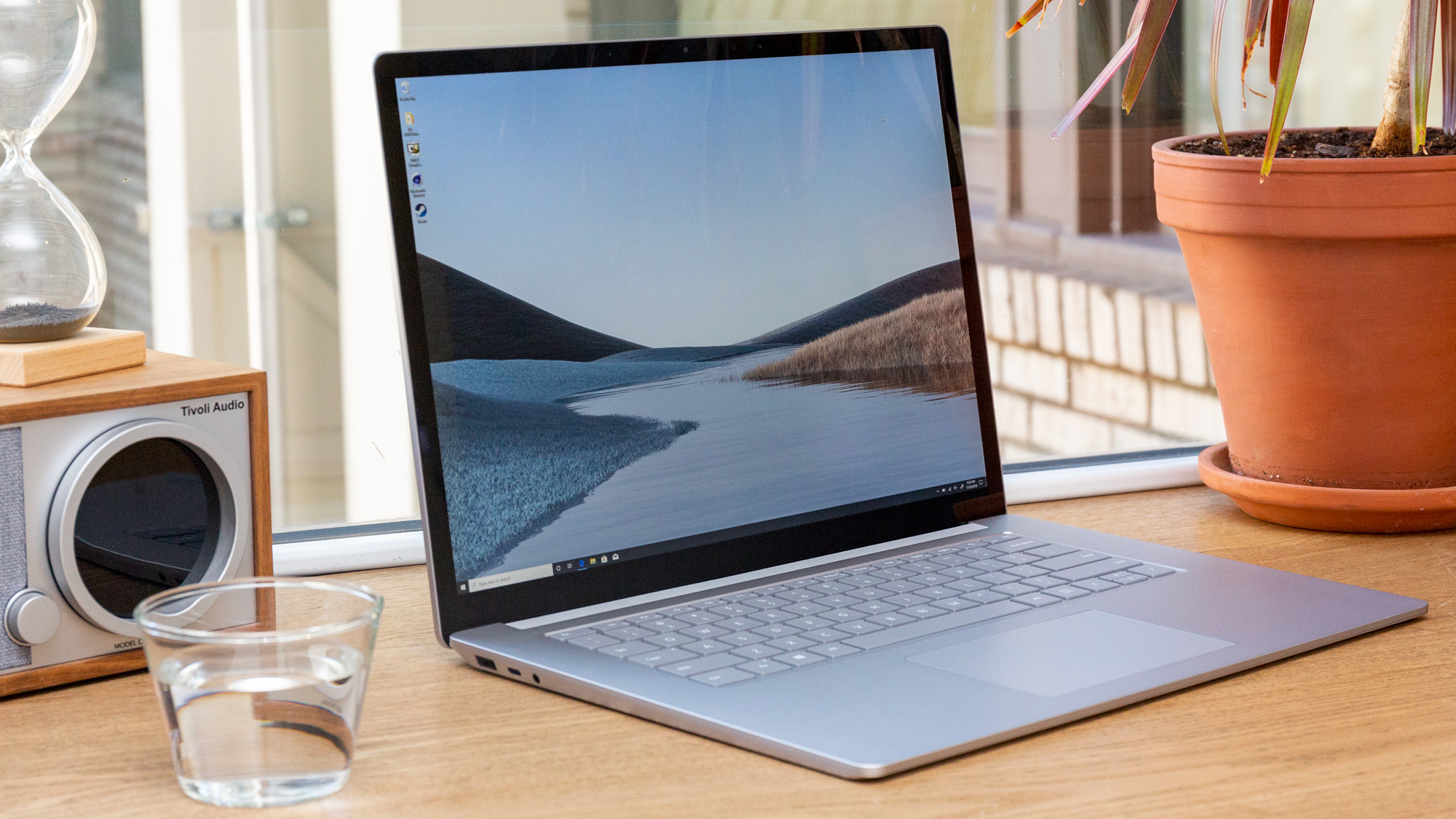
Despite being branded as one, this Intel-powered Surface Laptop 3 doesn't feel like a business laptop. Regardless, the Surface Laptop 3 is one of the best 15-inch laptops on the market.
Microsoft Surface Laptop 3 (15-inch, Intel) price and configuration options
The Intel version of the Surface Laptop 3, or the Surface Laptop 3 for Business, starts at $1,299 for a base model equipped with a Core i5 CPU, 8GB of RAM and a 128GB SSD.
That's not enough storage for most people so we recommend spending $1,399 for the 256GB SSD model. That storage bump normally costs $300 but an ongoing $200 off discount spares customers of Microsoft's overpriced upgrade.
Our $1,599 (retail price is $1,799) review unit packs a Core i7-1065G7 CPU, 16GB of RAM and a 256GB SSD. Doubling storage to 512GB runs up the bill to $1,999.
This Surface Laptop 3 for Business won't be sold at your local Best Buy. You can buy this version at online retailers that specialize in business products and from Microsoft's online store.
Microsoft Surface Laptop 3 (15-inch, Intel) design
There are no visible differences between the Intel and AMD versions of the Surface Laptop 3. You get the same sleek aluminum notebook that's just as thin (0.6 inches) as the 13-inch model. The Surface Laptop 3 ended up being a great laptop to bring on my basic economy flight, as it slid into the interior sleeve of my stuffed backpack.
Sign up to receive The Snapshot, a free special dispatch from Laptop Mag, in your inbox.

Just as impressive is how lightweight this laptop is. I could hardly feel the 3.4-pound Surface Laptop 3 in my backpack when I carried it from our Manhattan office to my apartment in Brooklyn. Although the Surface Laptop 3 isn't as portable as the 14-inch Lenovo ThinkPad X1 Carbon (0.6 inches, 2.1 pounds), it's significantly lighter and thinner than the Dell XPS 15 (0.7 inches, 4.5 pounds).
The Surface Laptop 3's minimalist aesthetic adheres to some of the same strict design principles as Apple's MacBooks. The result is a chassis that's simple, clean and bland.
Centered on the lid is a reflective chrome Microsoft logo that gets swallowed by a large silver metal surface. Open the lid and it's more of the same smooth silver aluminum. Here, however, a gray keyboard and touchpad provide a pleasing color contrast. The Surface Laptop 3's slanted back edge gives the laptop an aggressive stance but the simplistic design is a bit boring, especially without the Alcantara finish.
We hope the next version is modernized with thinner display bezels and a smaller footprint. I also would have welcomed some chrome trim around the edges or the touchpad — anything to make the laptop feel less sterile.
Is the Surface Laptop 3 for Business actually "for Business?"
Microsoft markets the Intel-powered Surface Laptop as being "for business" but it isn't by our definition.

There aren't any notable security features (apart from an IR camera, which is table stakes for a premium consumer laptop) that we typically see on a business laptop, like a privacy screen or webcam cover. Furthermore, the processor inside isn't vPro (10th-Gen vPro hasn't arrived yet), the chassis doesn't have any durability rating, and the port selection is scant. If you want a proper business laptop, go with something like the ThinkPad X1 Carbon.
To Microsoft's credit, the Surface Laptop 3 ships with Windows 10 Pro and the SSD is easy to upgrade, although the company says not to do it yourself.
Microsoft Surface Laptop 3 (15-inch, Intel) ports
If Microsoft is going to position its laptop as a business machine, then it needs to do better than this. The Surface Laptop 3's scant port selection is a problem for anyone who wants to plug in a mouse and keyboard.
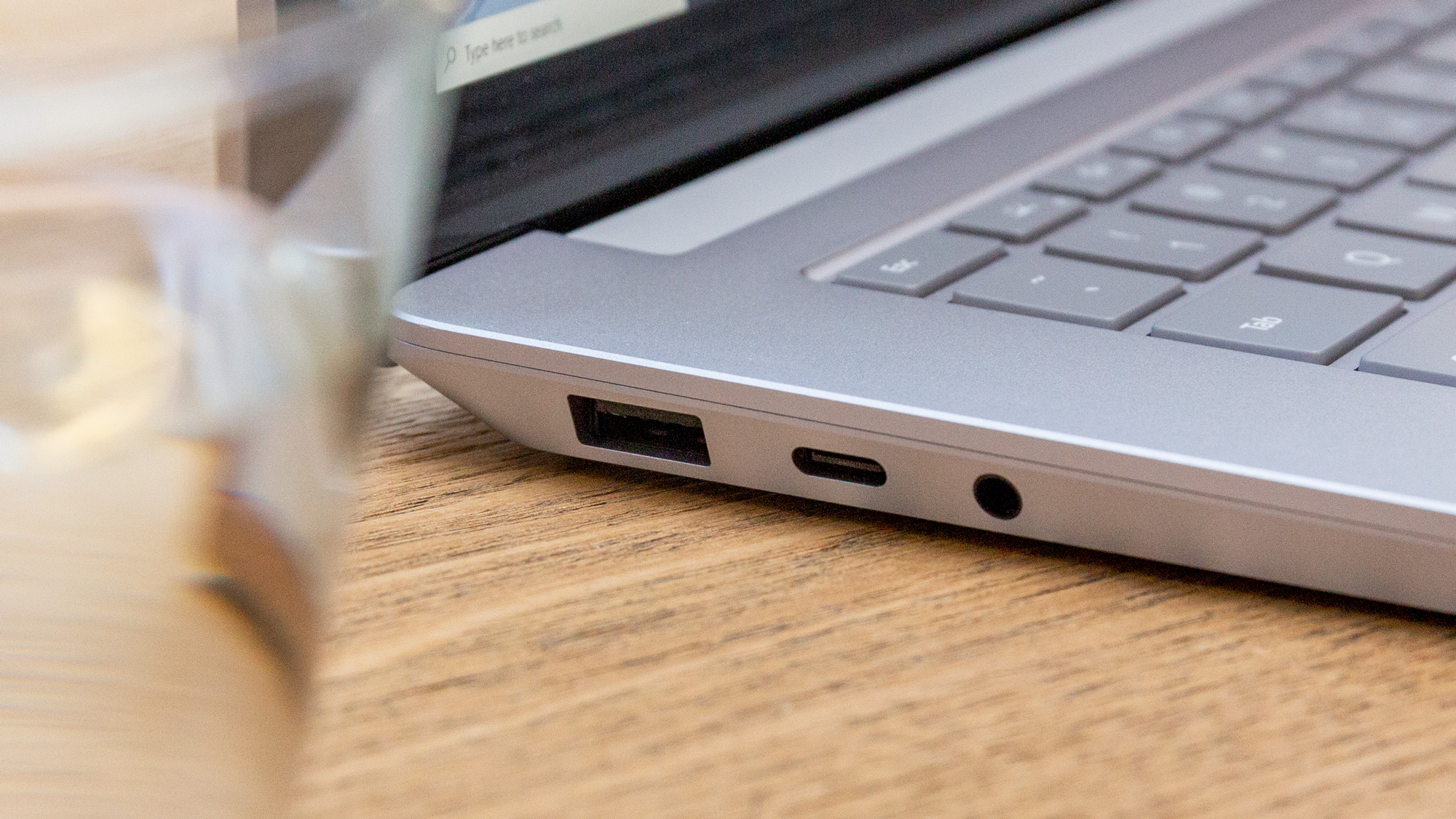
The Surface Laptop 3's only connections are a USB-C input, a USB 3.1 Type-A port and a headphone jack on the left side. A lone Surface Connect charging port is located on the right side.
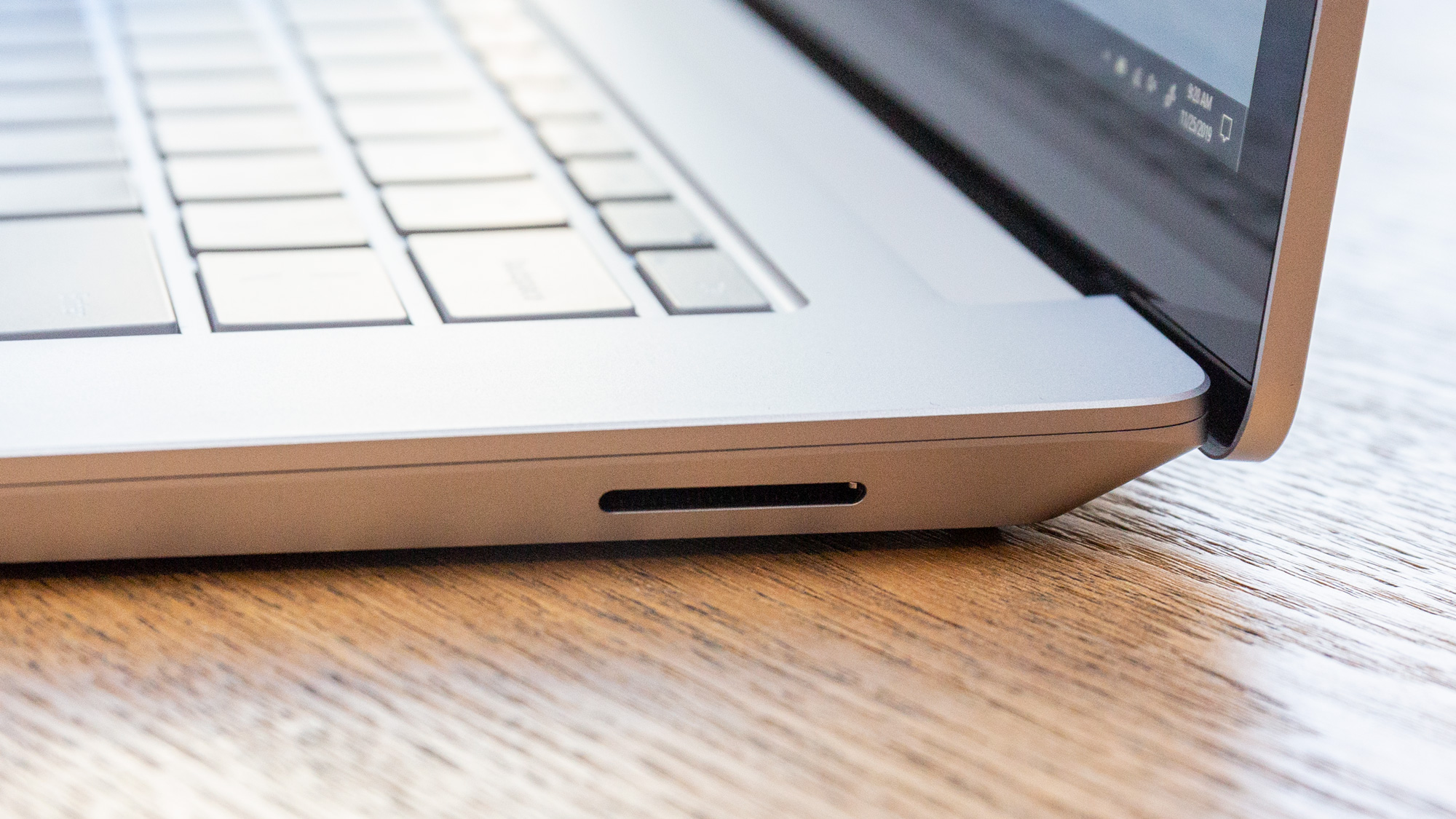
Unfortunately, the Surface Laptop 3's USB-C port isn't the Thunderbolt 3 variant, a forgivable shortcoming on the AMD version but not on this model, considering Thunderbolt 3 is an Intel technology.
Microsoft Surface Laptop 3 (15-inch, Intel) display
The oddly proportioned 15-inch, 2256 x 1504 resolution display is a good choice for business users. I find that a traditional 16:9 screen is best for consuming multimedia content, whereas Surface Laptop 3's 3:2 aspect ratio gives you a taller canvas to read documents and view charts. That's not to say you won't enjoy watching videos on the Surface Laptop 3: The panel is detailed, bright and colorful.

Daniel Craig's eyes were as piercing blue as a Whitewalker's in the trailer for No Time to Die. The panel is so detailed that I could see the smallest nicks on James Bond's face and the scars on Rami Malik's face underneath his creepy Phantom-esque mask. Yes, there were large black bars on the top and bottom of the screen, but the 15-inch panel was large enough for me to get immersed in the action. I appreciated the aspect ratio more when I was reading news sites and could see more text than on a 16:9 panel.
According to our colorimeter, the Surface Laptop 3's screen covers 105% of the sRGB color gamut, which is slightly less colorful than the ThinkPad X1 Carbon's display (109%) and nowhere near as vibrant as the XPS 15's (210%) 4K panel.
The Surface Laptop 3's panel peaked at an impressive 366 nits. That makes it about as bright as the premium laptop average (362 nits) and brighter than the 1080p panel on the ThinkPad X1 Carbon (336 nits). The XPS 15's 4K panel is super-radiant (418 nits).
Microsoft Surface Laptop 3 (15-inch, Intel) performance
Intel chips are still the most powerful laptop engines. Equipped with a 10th Gen Intel Core i7-1065G7 CPU and 16GB of RAM, our Surface Laptop 3 didn't flinch when I watched a Pokemon Sword and Shield stream on Twitch with 15 Google Chrome tabs open in the background. Even with three additional 1080p videos playing, I was able to cover the morning tech news without noticing a hint of lag.
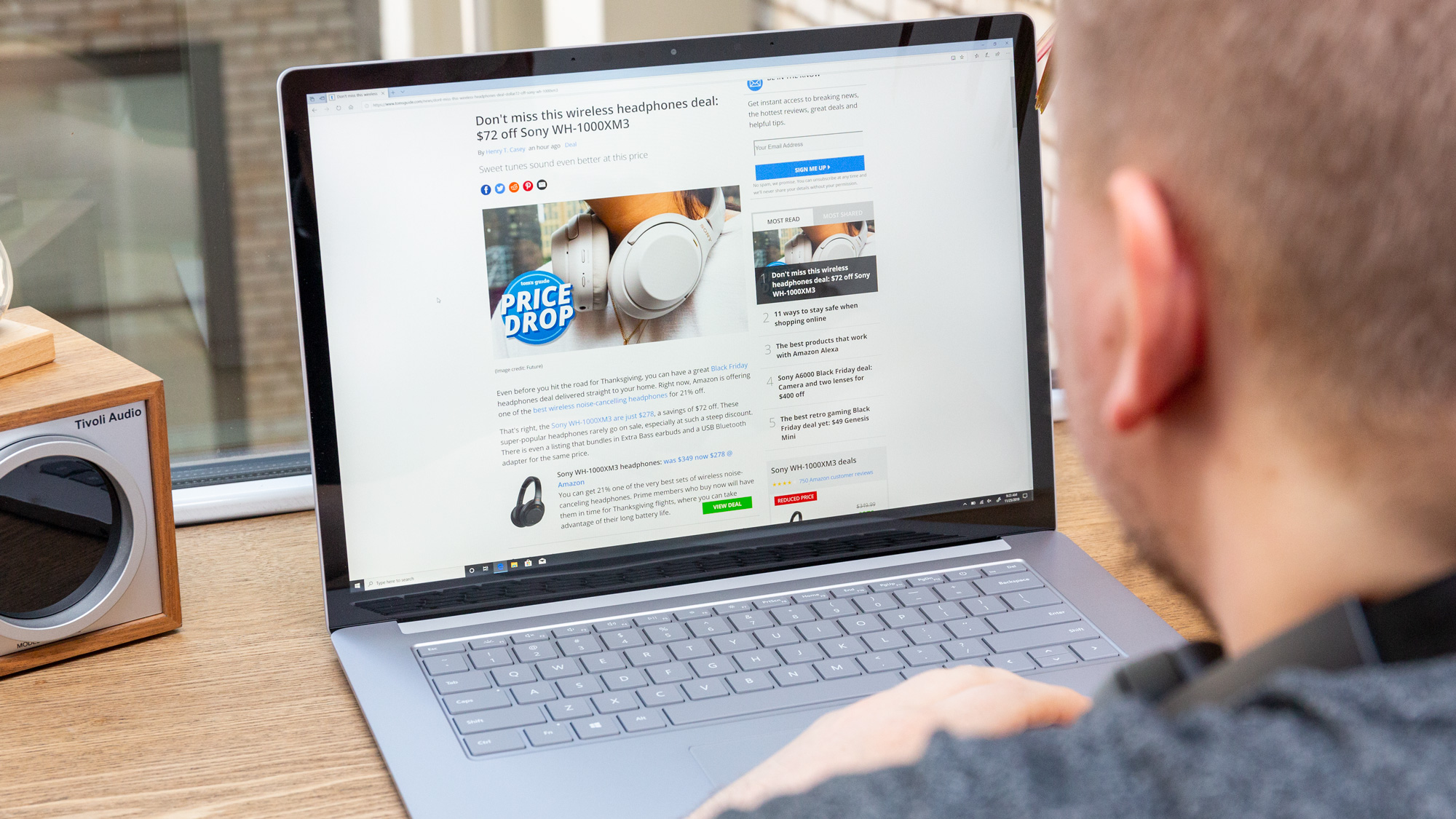
Before I move on to the benchmark scores, it's worth pointing out that the Surface Laptop 3 has Intel's Ice Lake chips, not the Comet Lake variant. From what we've seen, Ice Lake chips have stronger graphics performance, whereas Comet Lake CPUs (especially the six-core Core i7-10710U CPU) offer better performance.
Still, the Intel Ice Lake model crushed the AMD version of the Surface Laptop 3 in our benchmarks. The Intel version scored a 19,298 on the Geekbench 4.3 overall performance test, whereas the AMD-equipped Surface Laptop 3 (AMD Ryzen 5 3580U) landed at a lowly 11,612. Microsoft's laptop even topped the ThinkPad X1 Carbon (15,649, Core i5-8265U) and the premium laptop average (16,357), although the XPS 15 (28,882, Core i9-9980HK), with its H-series processor, dominated this round.
The Surface Laptop 3 for Business also did a solid job on our video-transcoding test, converting a 4K video to 1080p resolution in 17 minutes and 18 seconds. That's quicker than the Surface Laptop 3 with an AMD CPU (20:33) and the premium laptop average (20:48) but just seconds slower than the ThinkPad X1 Carbon (16:52). Again, the beastly XPS 15 (8:00) won this round.
Hurray! Microsoft finally outfitted one of its Surface devices with a speedy SSD. The Surface Laptop 3 duplicated 4.97GB of multimedia in 10 seconds at a rate of 508.9 megabytes per second. That's much faster than what the AMD version (282.7 MBps) clocked. It also outpaces the ThinkPad X1 Carbon (424.1 MBps) and matches the XPS 15 (508 MBps). The premium laptop average is a bit quicker (517 MBps).
Microsoft Surface Laptop 3 (15-inch, Intel) graphics
The Surface Laptop 3's Iris Plus GPU is a step in the right direction for integrated graphics, but the GPU still doesn't compete with discrete options.
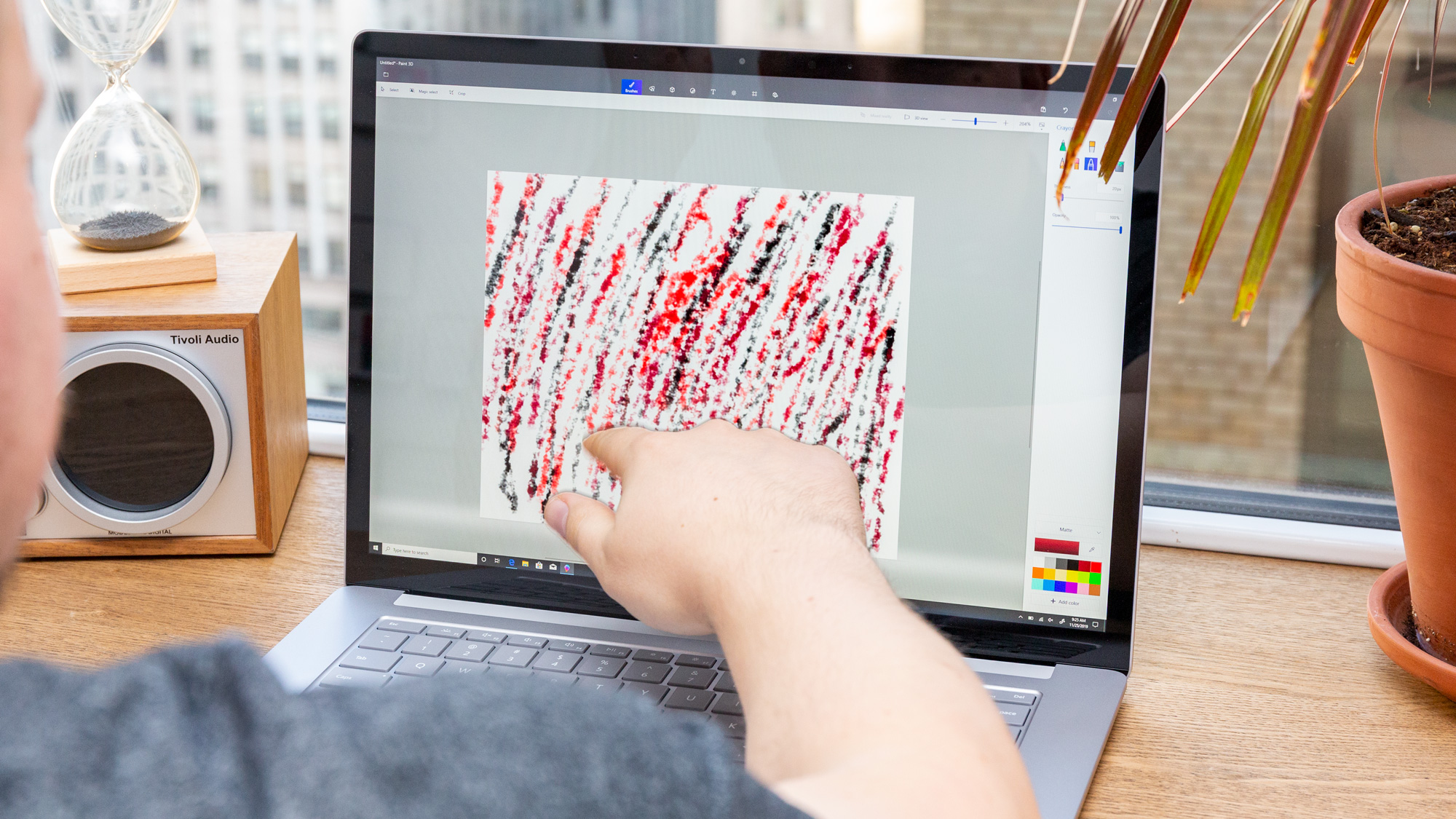
With a score of 112,670, the Surface Laptop 3 for Business outdid the standard AMD model (100,522), which is a huge win for Intel. It also crushed the 8th Gen-equipped ThinkPad X1 Carbon (81,350) but predictably couldn't catch the Dell XPS 15 (177,158) and its discrete GTX 1650 GPU.
We saw similar results on our real-world test; The Surface Laptop 3 with Iris Plus graphics played Dirt 3 at 61 frames per second, which is smoother than what the AMD model (56 fps) and the ThinkPad X1 Carbon (31 fps) managed but we'd rather game on the XPS 15 (80 fps).
Microsoft Surface Laptop 3 (15-inch, Intel) audio
The Surface Laptop 3's speakers sound surprisingly good considering that they're located beneath the keyboard. When I listened to Juice WRLD's epic "Lucid World," the singers voice was crisp and airy, and the bass slammed with a good amount of oomph. The Surface Laptop 3 had no trouble filling a large conference room with distorted sound, but we'd recommend connecting to a Bluetooth speaker if you want to play music outdoors, or invest in a pair of noise-cancelling headphones.
Microsoft Surface Laptop 3 (15-inch, Intel) keyboard and touchpad
I really enjoyed using the Surface Laptop 3's keyboard to write this review. The island-style keys have the perfect combo of click and bounce that kept my fingers effortlessly jumping from one key to the next. While they don't have the deepest travel, the keys provided a cushy landing for my fingers and I never bottomed out. I also like the spacing and sizing of the keys and the soft feeling of their smooth gray paint.

I typed at 117 words per minute with an accurate rate of 95% on the 10fastfingers.com typing test. That is faster than my 109-wpm average and just as accurate.
If you're coming from a Mac, relax; The Surface Laptop 3's 4.5 x 3-inch touchpad is much better than you might expect from a Windows laptop. The glass surface has a soft-touch coating that felt great against my fingers, and I had no problems executing Windows 10 gestures, from pinch-to-zoom to three-finger swipes to switch programs.
Microsoft Surface Laptop 3 (15-inch, Intel) battery life
The Surface Laptop 3 for Business isn't only faster than the AMD version but it even lasts longer on a charge. With a runtime of 9 hours and 32 minutes, the Surface Laptop 3 (Intel) outlasted its AMD sibling (8:00) by 1.5 hours, and just edged out the ThinkPad X1 Carbon (9:30). The Surface Laptop 3 with Intel also has longer endurance than the 4K XPS 15 (8:48) and the average premium laptop (8:43).
Microsoft Surface Laptop 3 (15-inch, Intel) webcam
You won't hear this often: the Surface Laptop 3's camera is so good that you don't need to buy an external webcam for conference calls. The laptop's 720p lens is among the best I've tested (although, that's a low bar).
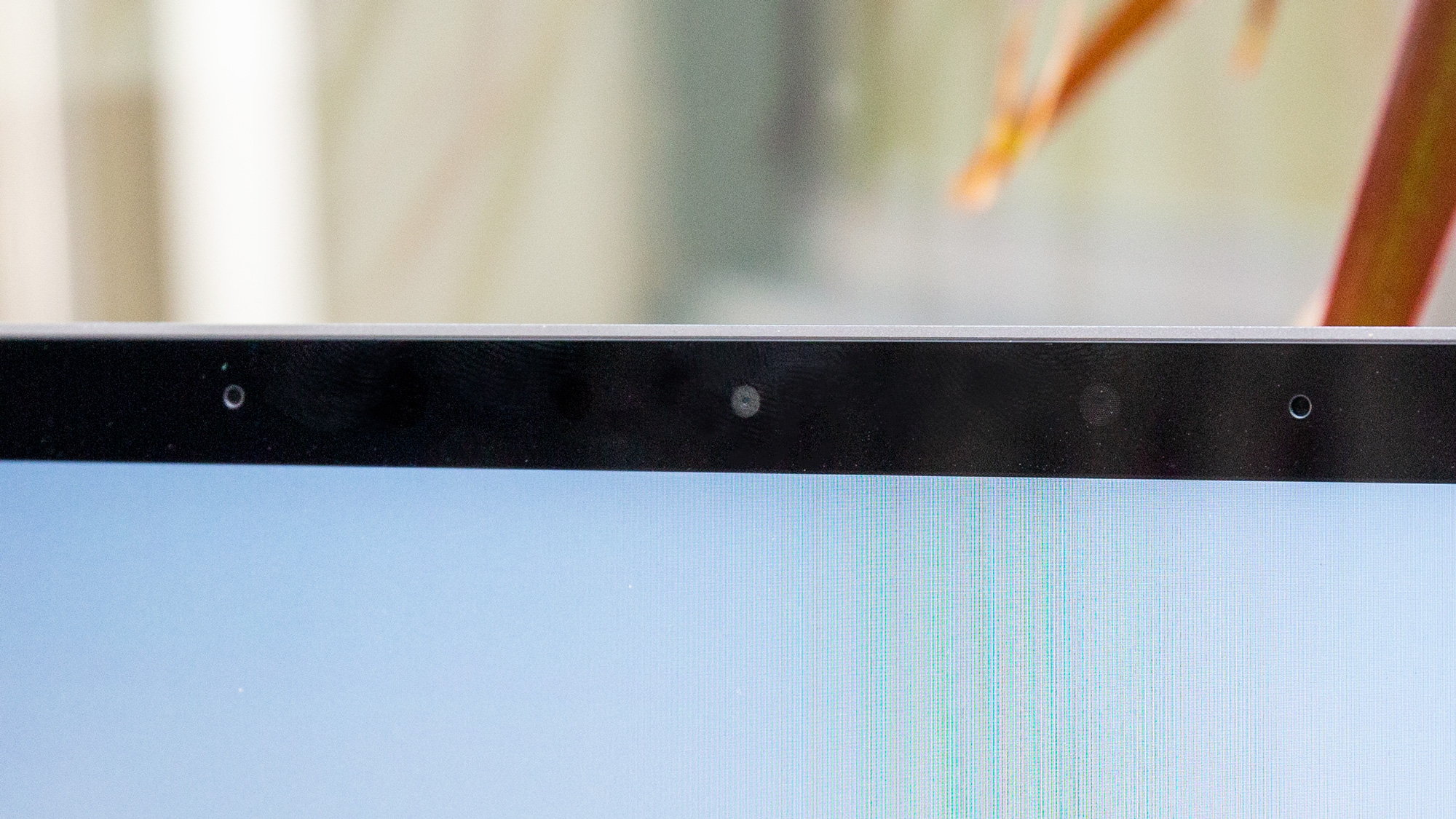
Yes, a good external cam will get you better video and photo quality, but a selfie I snapped in a dimly lit room was surprisingly sharp and my rosy complexion was accurately captured. There was some visual noise in the poor lighting but that haze quickly disappeared once I opened the blinds of my apartment.
Microsoft Surface Laptop 3 (15-inch, Intel) heat
You can use the Surface Laptop 3 on your lap without fear of burning your thighs. The laptop didn't overheat during our thermal tests. After playing a 15-minute, 1080p video, the underside warmed to 93 degrees Fahrenheit, which is below our 95-degree comfort threshold. The center of the keyboard (85 degrees) and the touchpad (79 degrees) were even cooler.
Microsoft Surface Laptop 3 (15-inch, Intel) software and warranty
The Surface Laptop 3's bloatware-free Windows 10 Pro is a breath of fresh air. Sure, there are a couple of pre-installed apps you'll probably never use — Farm Heroes Saga and Microsoft Solitaire Collections come to mind — but this is as close to pure Windows as you'll get.
The Surface Laptop 3 is sold with a standard one-year warranty. See how Microsoft did in our Best and Worst Brands and Tech Support Showdown special reports.
Bottom line
The Surface Laptop 3 for Business with Intel processors is a better laptop than its AMD sibling. It has better performance, longer battery life, a faster hard drive and ships with Windows 10 Pro. If the gulf in price were wider — the Intel model is only $100 more expensive — then we might consider the AMD model, but we strongly recommend going to Microsoft's online store and ordering the business edition instead.
Ignoring Microsoft's misleading "for business" designation, the Surface Laptop 3 is one of the best 15-inch laptops around. We recommend the ThinkPad X1 Carbon if you need a portable laptop for work, while the Dell XPS 15 offers more power than the Surface Laptop 3 and packs a discrete GPU.
With that considered, the Surface Laptop 3 with Intel processors is one of the best portable 15-inch laptops around and a much better option than the AMD model.
Phillip Tracy is the assistant managing editor at Laptop Mag where he reviews laptops, phones and other gadgets while covering the latest industry news. After graduating with a journalism degree from the University of Texas at Austin, Phillip became a tech reporter at the Daily Dot. There, he wrote reviews for a range of gadgets and covered everything from social media trends to cybersecurity. Prior to that, he wrote for RCR Wireless News covering 5G and IoT. When he's not tinkering with devices, you can find Phillip playing video games, reading, traveling or watching soccer.
